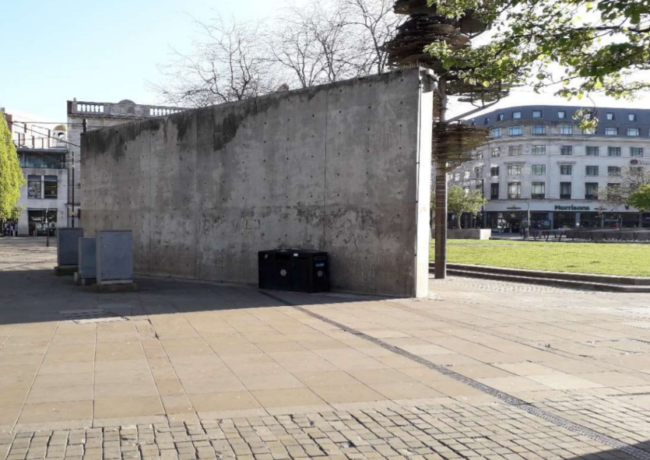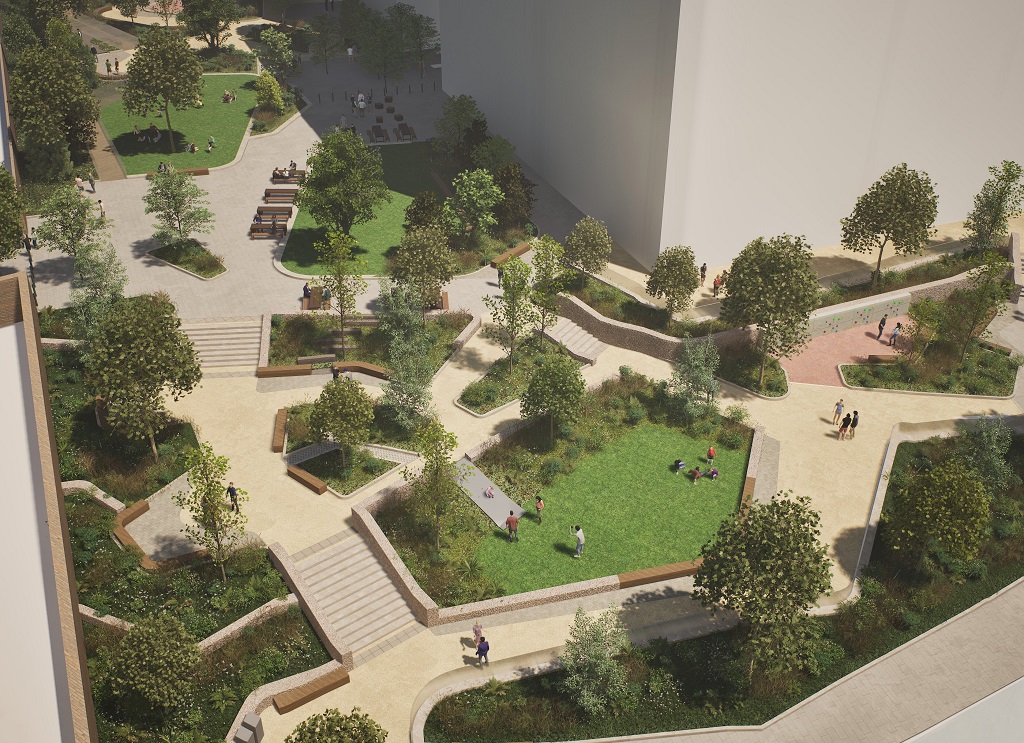Demolition date set for Piccadilly Gardens wall
Work to knock down the freestanding part of Japanese architect Tadao Ando’s controversial concrete wall will begin on 16 November, Manchester City Council has confirmed.
Plans to demolish the wall, built in 2002, were approved by the council last month.
The demolition forms part of wider plans to transform the area, which are being drawn up by LDA Design.
A consultation on the future of Piccadilly Gardens is due to start before the end of the year, as reported by Place North West in September.
As part of the redesign of the gardens, improvements will also be made to the Pavilion building, owned by Legal & General, which includes the other part of Ando’s wall.
By knocking down the wall, the council hopes it will be easier to see across and move through Piccadilly Gardens, with poor sightlines cited as a contributory factor to antisocial behaviour.
The overall regeneration scheme will cover an area including a section of Piccadilly to the north of Piccadilly Gardens, Parker Street to the south and Mosley Street to the west.
Sir Richard Leese, leader of Manchester City Council, said: “Piccadilly Gardens is a much-used public space with huge potential.
“The regeneration of this prominent space will have a big part to play [in the city’s recovery from the Covid-19 pandemic] by hosting appropriate events and encouraging and supporting nearby business activity and job creation.”





I hope they consider selling chunks of it off to the public as per the Berlin Wall, to which it is often compared.
By UnaPlanner
About time
By William Carden
The design of the wall and the gardens could be improved but the area’s decline has more to do with antisocial behaviour, criminal activity and poor maintenance. Until these issues are tackled by the police and the council, the redevelopment will be a waste of money.
By Anonymous
This is great but the rest of the wall should be demolished as well – all the way round to the tram stop
By Anonymous
I assume the original architect wanted it to filter out bus engine noise and soften the height transition to the Piccadilly Towers behind it. Hopefully new electric buses and more trees will do the same jobs.
By Bob
Piccadilly Gardens is a transport hub with a bit of grass and a coffee shop. Unless the buses and trams are moved this dynamic will never change.
By Milennial
It is well named the ‘Berlin Wall’. Plans to improve Piccadilly Gardens have gone on longer than the Cold War.
By Nve
Tadao Ando should be brought to Manchester and explain why the project failed. We need to learn from this. The demolition plant could move in immediately afterwards.
By North by North-West
I agree entirely with Sir Richard s comments
After many decades lets hope we at last see a regeneration of the area which ALL Mancunians can be proud of
The layout of the Gardens seen at present undoubtedly contributes to the anti social behavior which has been going on far too long on one of The City s most prominent sites
By F Westbrook